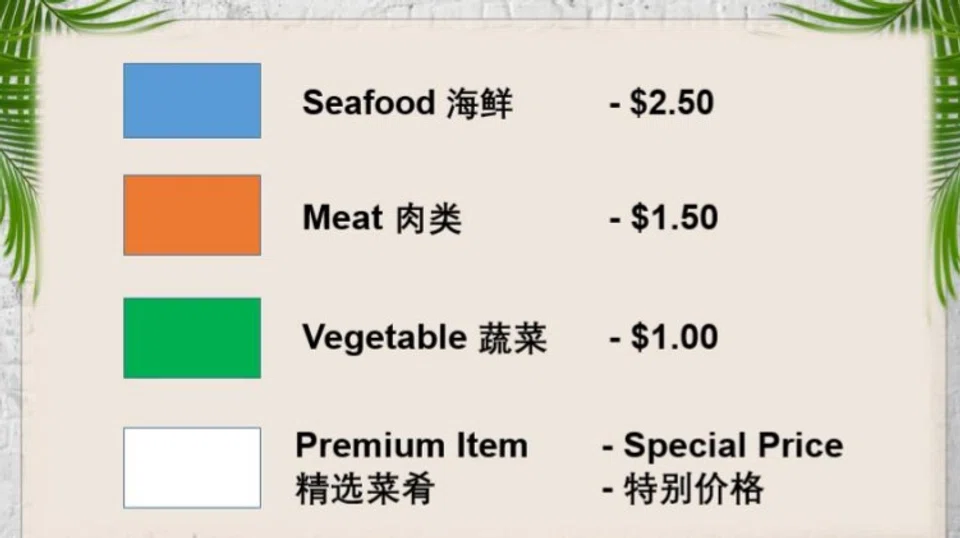Koufu's price labels will be the beginning of the end of wild cai png pricing
How cai png (economy rice) is priced has long been a subject of contention.
The cost of a plate of rice with accompanying dishes can vary wildly from stall to stall.
The New Paper team on March 21 bought cai png at different stalls to check the price difference.
For white rice with a meat dish, an egg and a vegetable dish, the meal at Sembawang MRT Kopitiam cost $4.60.
The same combination cost $5.50 at Maxim Tam Chian Kopitiam.
A meal with two meat dishes instead of one cost $6.50 at Bukit Timah Market (Interim).
It is rather impossible to figure out how much each item cost.
But mystery behind the cost of cai png will become a thing of the past.
To help consumers make more informed decisions, the Consumers Association of Singapore and Koufu have collaborated to implement colour-coded price labels at cai png stalls in Koufu foodcourts and coffee shops by end-2025.

Different dishes will have a colour-coded tag, with a price indicator pasted at the stall for greater price transparency.
Four colour-coded tags will be used: green for vegetables, orange for meat, blue for seafood, and white for premium vegetables, meat or seafood.
Seafood will go for $2.50, meat for $1.50 and vegetables for $1.00, while the prices for premium items will be handwritten on the tags.
Case president Melvin Yong shared that complaints about the actual price of a meal were often centred on the ambiguity of the prices of the dishes on display.
Having colour-coded labels will allow consumers to make informed decisions and prevent any potential disputes over prices.
"I hope this initiative will lay the groundwork for all economy rice stalls in Singapore to do the same. It is important that we know clearly the price of what we are buying."
The pilot launch will be at Plantation Plaza in Tengah and will expand to other branches by the end of 2025.